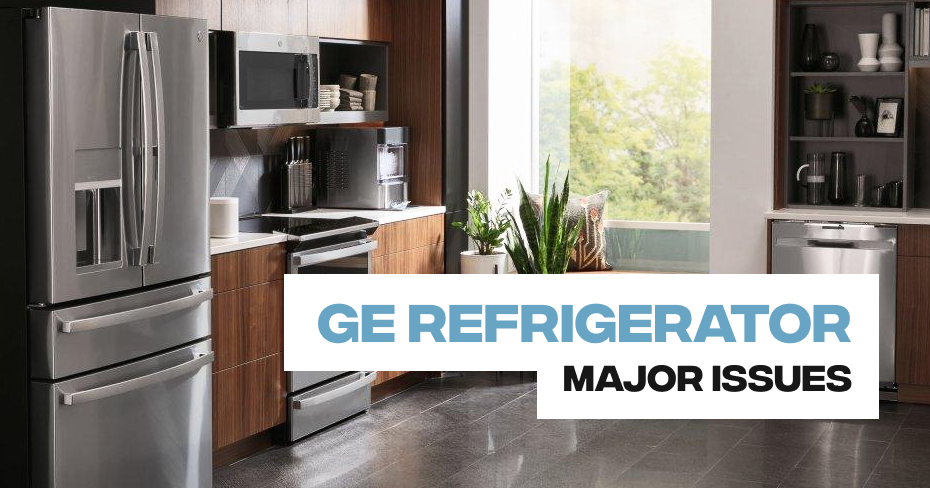
GE Refrigerator Frost Buildup
Frost buildup not only eats up precious storage space in your freezer, but it can also lead to unpleasant odors and freezer-burned food. But what causes freezer frost in the first place? Let’s explore the key culprits—and what you can do to prevent it from building up.
Common Causes Of Frost Buildup
Freezer frost occurs when moisture comes into contact with the evaporator coils inside your freezer and then freezes. The most common culprits of frost buildup include:
- A damaged or worn-out door seal: Your freezer’s door seal (also called a gasket) keeps cold air in and warm air out. Damage or wear and tear over time can lead to cracks in the seal, allowing moisture to enter the freezer.
- An open freezer door: A freezer door that’s left even slightly ajar for a period of time can allow cold air to escape and warm air to creep in.
- Faulty defrost timer: A defrost timer controls when your freezer is in cooling mode and defrost mode. Normally, the timer runs on regular cycles throughout the day to prevent frost from building up on the evaporator coils. If the timer becomes defective, however, the defrost cycle may not turn on and frost will begin to build up.
- Faulty defrost heater: Similarly, if the defrost heater is malfunctioning, it will not do its job of melting the frost on the evaporator coils, leading to buildup.
- Faulty defrost thermostat: The defrost thermostat keeps track of the temperature of your freezer’s evaporator coils and signals when to turn the defrost heater on and off. A defective thermostat could prevent the heater from turning on, again leading to the accumulation of frost.
How To Prevent Freezer Frost
Fortunately, with a little care and consideration, frost buildup can often be avoided. Here are five simple tips to help keep frost from accumulating in your freezer:
- Keep the door closed: Make sure the freezer door is completely shut after every use. Check to ensure nothing is blocking the door from closing fully.
- Organize your freezer: A tidy freezer can help you reach for what you need faster, reducing the need to frequently open and close the freezer door or keep the freezer open for long periods of time.
- Cool food before storing: Placing hot food in the freezer can introduce humidity. Allow food to cool first and wipe any moisture on the outside of the packaging before storing it in the freezer.
- Inspect the door seal: Check for seal damage by slowly moving your hand around the outside perimeter of the closed freezer door. If you feel cold air leaking out, it may be time to replace the sea
- Check the temperature: Make sure your freezer is set at the manufacturer’s recommended setting (usually 0°F) and use a freezer thermometer to monitor the temperature. If it gets too warm or cold, you may need to troubleshoot your freezer or call a repair professional.
